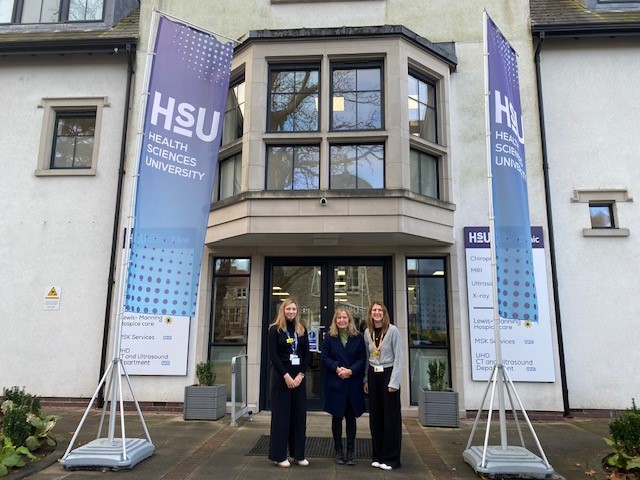
Overview
Attention deficit/hyperactive disorder (ADHD) is a common neurodevelopmental disorder. Between 7.2% and 9.4% of children are diagnosed with ADHD in the peak age range of 7 – 10 years (Danielson et al., 2018; Thomas et al., 2015). This affects their ability to concentrate which can result in functional deficits in school and later with work and interpersonal relationships (Ginapp et al., 2023). Physical activity has been associated with better social relationships and measures of cognitive function in children and adolescents diagnosed with ADHD (Ng et al., 2017; Taylor et al., 2023). This suggests that increased physical activity may be used as an adjunctive intervention for children with ADHD. To investigate this a multidisciplinary team designed and piloted a system of appealing, age-appropriate moderate to vigorous physical activities for primary school children that class teachers can use in physical education (PE) classes or after-school clubs (Taylor et al., 2020). However, the effects of long-term use of such a system have not been examined in large-scale studies.
Project Contact:
Associate Professor Alyx Taylor
Email: ataylor@aecc.ac.uk
Details
The aim is to further develop and evaluate a flexible system of physical activities designed to engage and maintain the interest of children with poor attention, including those with attention deficit/hyperactivity disorder (ADHD).
This programme of study will provide opportunity for both qualitative and quantitative evaluation of the fully developed physical activity system. Quantitative evaluation could include testing physical and psychological measures similar to those piloted. It will also provide the opportunity to explore the perceptions of the class teachers and other stakeholders regarding the use of the physical activity system.
This programme of study will enable rigorous testing of quantitative effects of a flexible system of physical activities on the symptoms of ADHD. It will also enable qualitative exploration of the stakeholders’ perceptions of the system.
Immediate positive feedback from staff in the pilot studies indicates the adjunctive intervention can improve concentration in non-PE classes as well as their PE classes. Greater engagement in physical activity has been shown previously to be associated with better social relationships and measures of cognitive function in children and adolescents. Thus, there is potential for this simple intervention to have immediate positive impact for the children in school, and through encouraging increased physical activity may have long-term benefits for them in social and work domains.
Funding 
We have funding available via fee-waiver support for UK home students. Applicants are asked to make it clear as part of their application that they are applying for this opportunity. Decisions will be made based on the excellence of the candidate.
Self-funded students are also welcome to apply for this project. Self-funded students can be UK home students or international students.
Availability 
UK students (will need enhanced DBS)
Potential Supervisors 
- Alyx Taylor, Associate Professor Physiology, Health Sciences University, Bournemouth, U
- Professor Stewart Cotterill, Head of School for Health and Rehabilitation Sciences, HSU
- Sara Lindberg, MD, PhD, Lund University, Faculty of Medicine, Department of Health Sciences, Child and Family Health, Lund, Sweden
References 
Danielson, M. L., Bitsko, R. H., Ghandour, R. M., Holbrook, J. R., Kogan, M. D., & Blumberg, S. J. (2018). Prevalence of parent-reported ADHD diagnosis and associated treatment among US children and adolescents, 2016. Journal of Clinical Child & Adolescent Psychology, 47(2), 199-212.
Ginapp, C. M., Greenberg, N. R., Macdonald-Gagnon, G., Angarita, G. A., Bold, K. W., & Potenza, M. N. (2023). The experiences of adults with ADHD in interpersonal relationships and online communities: A qualitative study. SSM-Qualitative Research in Health, 3, 100223.
Ng, Q. X., Ho, C. Y. X., Chan, H. W., Yong, B. Z. J., & Yeo, W. S. (2017). Managing childhood and adolescent attention-deficit/hyperactivity disorder (ADHD) with exercise: A systematic review. Complementary therapies in medicine, 34, 123-128.
Taylor, A., Kong, C., Zhang, Z., Herold, F., Ludyga, S., Healy, S., … & Zou, L. (2023). Associations of meeting 24-h movement behavior guidelines with cognitive difficulty and social relationships in children and adolescents with attention deficit/hyperactive disorder. Child and Adolescent Psychiatry and Mental Health, 17(1), 42.
Taylor, A., Novo, D., & Foreman, D. (2019, September). An exercise program designed for children with attention deficit/hyperactivity disorder for use in school physical education: Feasibility and utility. In Healthcare (Vol. 7, No. 3, p. 102). MDPI.
Thomas, R., Sanders, S., Doust, J., Beller, E., & Glasziou, P. (2015). Prevalence of attention-deficit/hyperactivity disorder: a systematic review and meta-analysis. Pediatrics, 135(4), e994-e1001.
Latest News
Discover and read all the latest news, press releases and happenings here at Health Sciences University.

Health Sciences University (HSU) recently hosted a thought-provoking panel discussion in celebration of International Day of Women and Girls in Science.

Dr Mahitha Naidu has recently graduated from the MSc Podiatry (Pre registration) course at Health Sciences University.

Health Sciences University, in collaboration with Dorset HealthCare, has launched a new Brain Health Clinic on its Bournemouth campus.

Carla tells us more about her experience of the course so far and what she enjoys about being part of the HSU community.

Dan Egelstaff is a First Year student on the MSc Occupational Therapy (pre-registration) course. The degree at Health Sciences University appealed to Dan when he was working as a Learning Disabilities Support Worker during the Covid-19 pandemic.

Natalia Purkiss is in her first year of the MSc Occupational Therapy (pre-registration) course at Health Sciences University.
